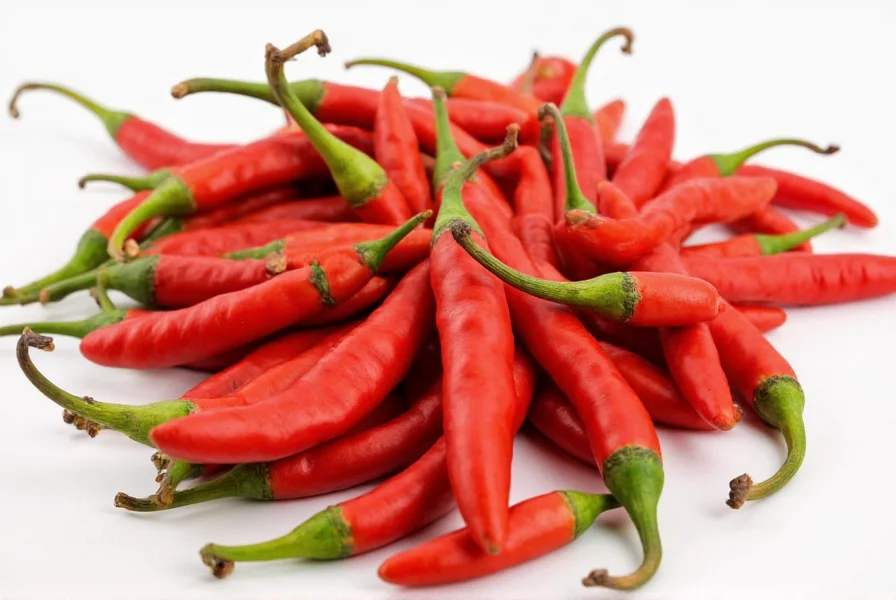Yes, chili peppers can be beneficial for people with diabetes when consumed in moderation. Research shows that capsaicin, the compound that gives chili its heat, may improve insulin sensitivity and help regulate blood sugar levels. However, individuals should monitor their personal responses and consult healthcare providers, especially if taking medications that affect blood sugar.
For those managing diabetes, dietary choices significantly impact blood sugar control and overall health. Chili peppers, a common ingredient in many global cuisines, have gained attention for their potential health benefits. Understanding how this spicy food affects diabetes management requires examining scientific evidence and practical considerations.
The Science Behind Chili and Diabetes Management
Chili peppers contain capsaicin, a bioactive compound responsible for their characteristic heat. Multiple studies have investigated capsaicin's effects on metabolic health. Research published in the Journal of Nutritional Biochemistry demonstrated that capsaicin activates TRPV1 receptors, which may enhance insulin sensitivity and glucose metabolism. Another study in Cell Metabolism found that regular capsaicin consumption correlated with improved post-meal blood glucose levels in prediabetic individuals.
When considering can diabetics eat spicy food safely, the evidence suggests moderate chili consumption generally supports rather than hinders diabetes management. The American Diabetes Association acknowledges certain spices, including chili peppers, as potentially beneficial components of a diabetes-friendly diet due to their low carbohydrate content and potential metabolic benefits.

Key Benefits of Chili for People with Diabetes
Several mechanisms explain why chili peppers and blood sugar control may be positively connected:
- Improved insulin sensitivity - Capsaicin appears to enhance insulin receptor function
- Reduced postprandial glucose spikes - Studies show chili consumption with meals may moderate blood sugar rises
- Anti-inflammatory properties - Chronic inflammation contributes to insulin resistance
- Low carbohydrate content - Most chili varieties contain minimal carbs that affect blood sugar
- Potential weight management support - Some research suggests capsaicin may increase calorie expenditure
Practical Considerations for Diabetes Management
While the evidence supporting capsaicin effects on insulin sensitivity is promising, several factors require consideration:
| Factor | Recommendation | Reason |
|---|---|---|
| Portion size | 1-2 teaspoons of fresh or dried chili per meal | Excessive amounts may cause digestive discomfort |
| Medication interactions | Monitor blood sugar closely when adding chili | Potential enhanced effects with certain diabetes medications |
| Added ingredients | Avoid chili products with added sugar or unhealthy fats | Many commercial chili sauces contain problematic additives |
| Individual tolerance | Start with mild varieties and gradually increase | Gastrointestinal sensitivity varies among individuals |
Incorporating Chili into a Diabetes-Friendly Diet
For those exploring diabetes-friendly spicy foods, consider these practical strategies:
Add fresh chili peppers to vegetable stir-fries, egg dishes, or bean-based meals. Dried chili flakes work well sprinkled on roasted vegetables or incorporated into spice rubs for lean proteins. When selecting commercial products, read labels carefully to avoid added sugars commonly found in many hot sauces and chili-based condiments.
Individuals with diabetic neuropathy should exercise caution, as some research suggests capsaicin might temporarily increase nerve sensitivity. Those with gastrointestinal complications from diabetes may also need to moderate chili intake, as spicy foods can exacerbate certain digestive issues.

Research Limitations and Future Directions
While current evidence supports the potential benefits of chili for diabetes management, most studies have been conducted on animals or in controlled laboratory settings. Larger human trials are needed to establish definitive recommendations regarding optimal dosage and long-term effects. Researchers continue investigating whether different chili varieties offer varying benefits for managing diabetes with dietary spices.
The relationship between chili consumption and diabetes management represents just one aspect of a comprehensive approach to blood sugar control. A balanced diet, regular physical activity, appropriate medication, and consistent monitoring remain foundational to effective diabetes management.
Frequently Asked Questions
Can people with type 2 diabetes safely eat chili peppers?
Yes, most people with type 2 diabetes can safely consume chili peppers in moderation. Research indicates capsaicin may improve insulin sensitivity and help regulate blood sugar levels. However, individuals should monitor their personal responses and consult their healthcare provider, especially if taking medications that affect blood sugar. Those with gastrointestinal complications from diabetes may need to moderate their intake.
How does capsaicin affect blood sugar levels in diabetics?
Capsaicin, the active compound in chili peppers, appears to affect blood sugar through several mechanisms. It activates TRPV1 receptors which may enhance insulin sensitivity and glucose metabolism. Studies show it can reduce post-meal blood glucose spikes and improve insulin receptor function. Some research also suggests capsaicin may have anti-inflammatory effects that benefit metabolic health. However, individual responses vary, and more human studies are needed to fully understand these effects.
What's the recommended amount of chili for someone with diabetes?
For most people with diabetes, 1-2 teaspoons of fresh or dried chili per meal represents a reasonable amount that may provide benefits without causing discomfort. Start with smaller amounts if you're not accustomed to spicy foods and gradually increase as tolerated. Avoid commercial chili products with added sugars or unhealthy fats. Always monitor your blood sugar response when introducing new foods into your diet, and consult your healthcare provider for personalized recommendations.
Are there any risks of eating chili if you have diabetes?
While chili peppers are generally safe for people with diabetes, certain considerations exist. Those with diabetic neuropathy might experience temporary increased nerve sensitivity. Individuals with gastrointestinal complications from diabetes may find spicy foods exacerbate digestive issues. Chili products with added sugars can negatively impact blood sugar control. Additionally, capsaicin might enhance the effects of certain diabetes medications, potentially increasing hypoglycemia risk. Always monitor your personal response and consult your healthcare provider.











 浙公网安备
33010002000092号
浙公网安备
33010002000092号 浙B2-20120091-4
浙B2-20120091-4